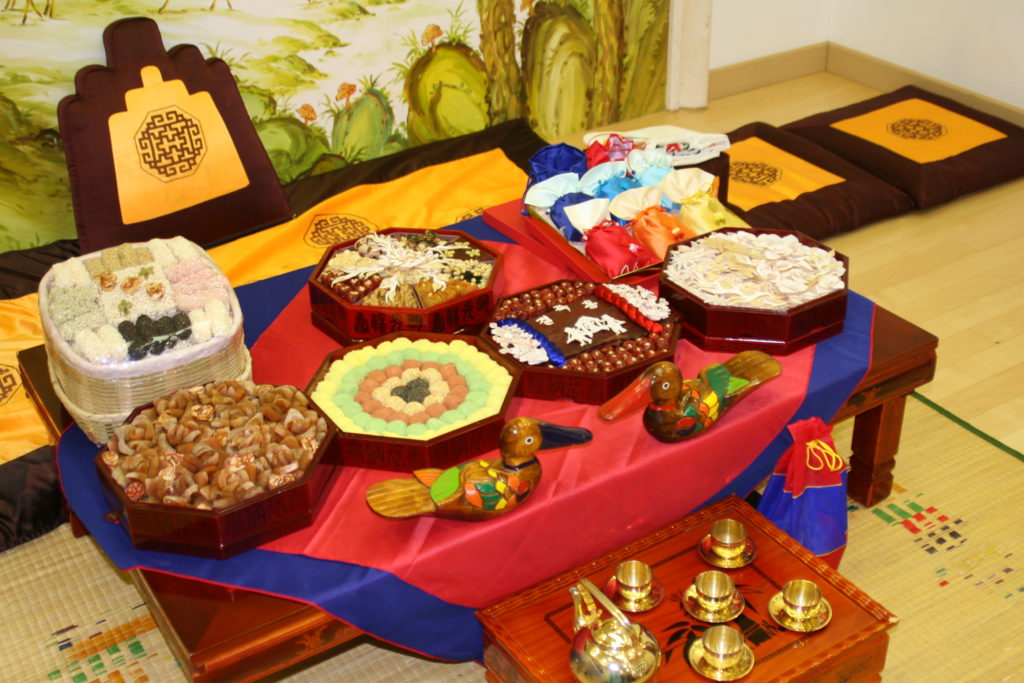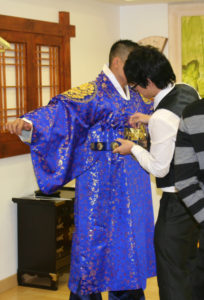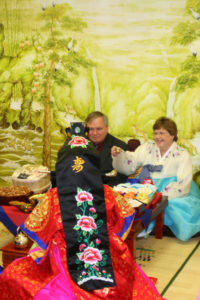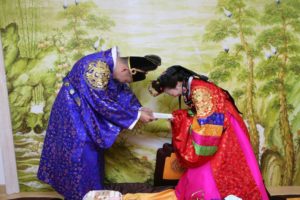
The Wedding
I am going to share a little about our son and daughter-in-law’s wedding in Seoul. To protect their privacy, the pictures I am using will not show their faces. Our daughter-in-law is a Korean citizen and her family lives in Korea, which is why the marriage took place there. They were married in a wedding hall, which is typical in Korea. The wedding hall staff handles all of the details of the wedding. The bride’s mother typically wears a pink or purple hanbok and the groom’s mother wears a blue one. Our daughter-in-law’s grandmother and aunts also wore hanboks.
While it is considered bad luck in the US for the bride and groom to see each other before the ceremony, this is not true in Korea. There was a large reception area to greet guests, a room where pictures with family and friends were taken, as well as an adjacent room for the ceremony.
The wedding ceremony was entirely in Korean. One of our daughter-in-law’s cousins translated for us. My daughter-in-law’s mother and I were part of a candle-lighting ceremony and then we bowed to each other. The officiant spoke and of course made the marriage official. Our son and daughter-in-law bowed to parents as well as the whole congregation. After they were married, a cake was brought to the front of the room and cut by the bride and groom. Following the cake ceremony, there was a traditional recessional – except that two people from the wedding hall shot out confetti from devices that looked a little like bugles, making for a very celebratory ambiance.
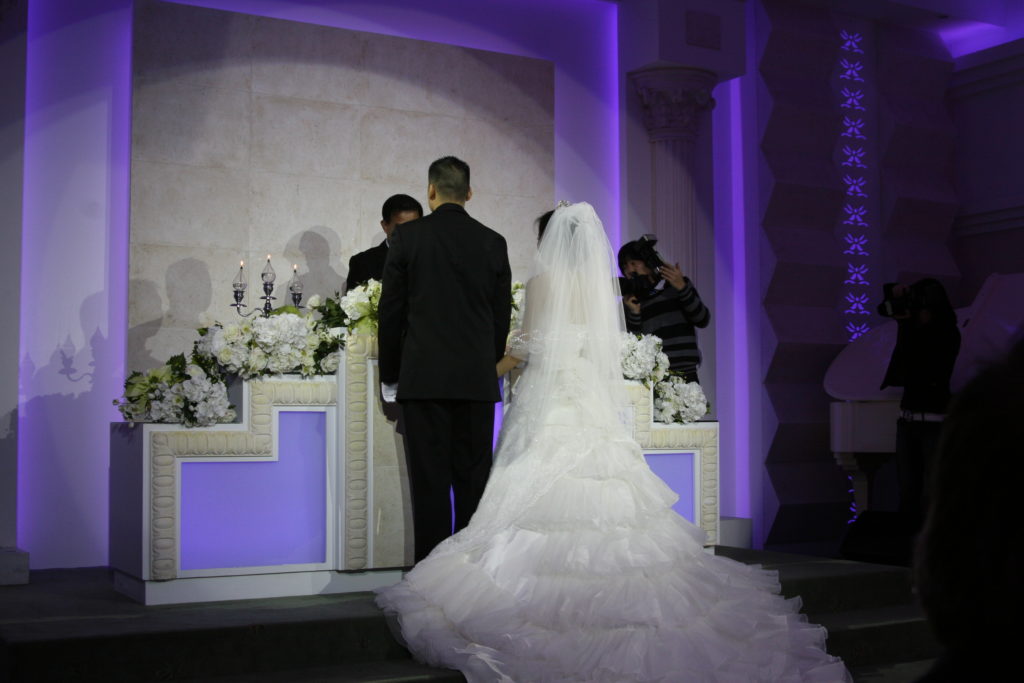
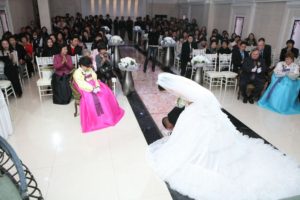
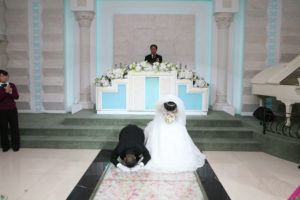
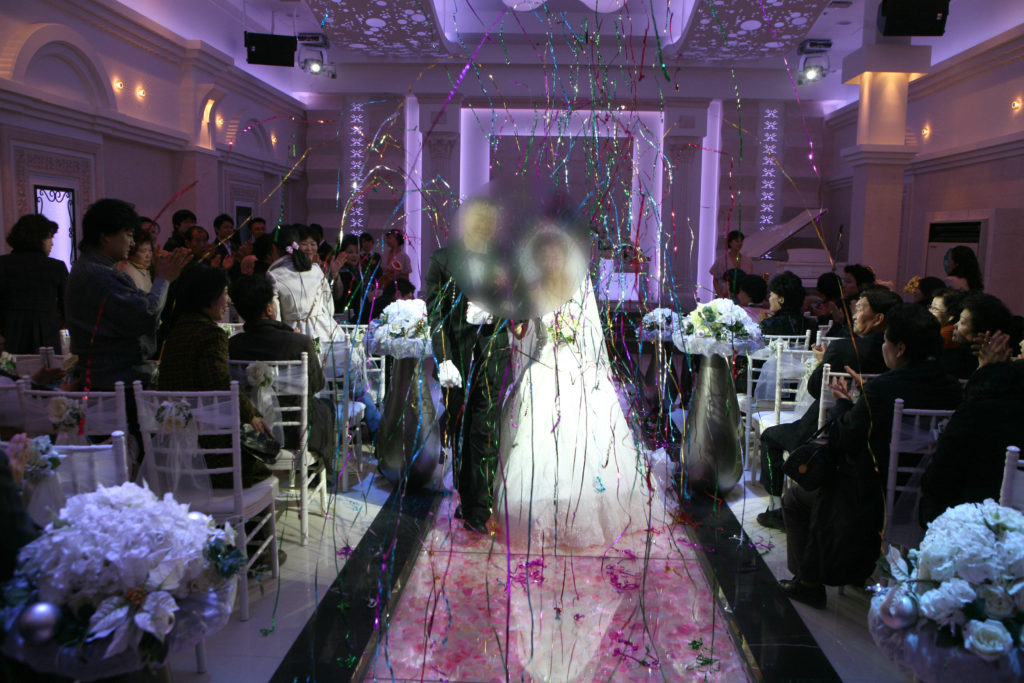
We then went to another floor in the wedding hall with close family for a Korean ceremony called a pyebaek. There was a low table set with traditional wedding foods. There was also a pair of wedding ducks, symbolic of fidelity because they mate for life. Both our son and daughter-in-law wore traditional ceremonial clothing for this part of the wedding. We sat on cushions at the table and shared advice and blessings for our children. They then poured soju which we drank together. There was yet another bowing ceremony and then we threw chestnuts into a cloth they held. This was a fertility ceremony and the number of chestnuts that landed in the cloth supposedly equaled the number of children they would have. Our daughter-in-law’s mother then did these same things, having a sip of the soju and throwing chestnuts as part of the fertility ceremony. Following this, our son and daughter-in-law bowed to their siblings (who also bowed to them) as well as to aunts and uncles. They posed for pictures with each of these groups. Finally there is a tradition where the groom gives his wife the money that was received as wedding gifts. This is what our son is handing to his wife in the last picture. The tradition is based on the belief that husbands would not spend money wisely so the responsibility is given to the wife.
Following the ceremony, there was a buffet meal – but not the traditional wedding reception as in the United States. They had another ceremony and reception in the United States a few months later for friends and family here.

